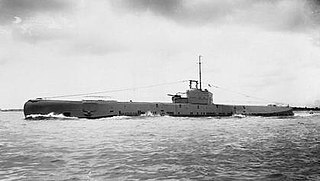Notes
- ↑ Colledge, J J (1970). Ships of the Royal Navy: an historical index. Vol 2. Newton Abbot: David & Charles. p. 63.
Several ships of the Royal Navy have borne the name HMS Cachalot, after the marine mammal, the cachalot, or sperm whale:
Several ships and one submarine of the Royal Navy have borne the name HMS Dreadnought in the expectation that they would "dread nought", i.e. "fear nothing". The 1906 ship was one of the Royal Navy's most famous vessels; battleships built after her were referred to as 'dreadnoughts', and earlier battleships became known as pre-dreadnoughts.
Seven ships of the British Royal Navy have been named HMS Orion, after the hunter Orion of Greek mythology:
Sixteen vessels and two shore establishments of the Royal Navy have been named HMS Phoenix, after the legendary phoenix bird.
Eight ships or submarines of the Royal Navy have been named HMS Anson, after Admiral George Anson:
Six ships of the Royal Navy have been named HMS Amethyst, whilst another was planned:
Seven ships of the Royal Navy have been named HMS Hecla, after the volcano Hekla in Iceland.
Three vessels of the Royal Navy have been named HMS Ambush.
Three ships of the Royal Navy have been named HMS Adamant:
Seven ships of the Royal Navy have been named HMS Orpheus. Orpheus was the magical father of songs in Greek mythology.
Seven ships of the Royal Navy have borne the name HMS Onyx, after the mineral Onyx. Another was renamed before being launched:
Ten ships of the Royal Navy have been named HMS Clyde after the River Clyde that runs through the city of Glasgow, Scotland. For Her Majesty's Naval Base Clyde see HMNB Clyde.
Three ships of the Royal Navy have been named HMS Swordfish after the fish.
Eight ships of the Royal Navy have borne the name HMS Bonaventure, and another was planned:

HMS Cachalot (N83) was one of the six-ship class of Grampus-class mine-laying submarine of the Royal Navy. She was built at Scotts, Greenock and launched 2 December 1937. She served in World War II in home waters and the Mediterranean. She was rammed and sunk by the Italian torpedo boat Generale Achille Papa on 30 July 1941.
Eleven ships of the Royal Navy have borne the name HMS Porpoise, after the marine mammal, the Porpoise:
Seven ships of the Royal Navy have borne the name HMS Hazard:
A ship and two submarines of the Royal Navy have been named HMS Ursula:
Six ships of the Royal Navy have borne the name HMS Opossum, after the opossum:
Seven ships of the Royal Navy have borne the name HMS Sibyl or HMS Sybille, named for the Greek mythological figures, the Sibyls :